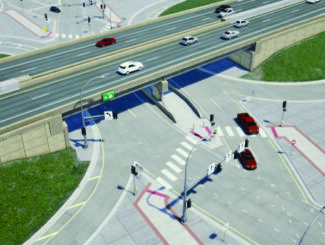July 17, 2023
By Ryan Earp, Direct of Public Engagement, WSB
There is a growing understanding and belief that the smart cities of tomorrow are not only responsive to the needs of residents but are capable of leveraging data and technology to maximize project outcomes, create efficiencies and improve the overall quality of life for community members. As public engagement and communications professionals, the shift to smart cities has signaled a need to evolve our understanding and approach, including the tools and techniques we use to connect and communicate with community members and stakeholders. With smart cities comes smart public engagement and an understanding that many of the engagement barriers that existed yesterday have been lifted – thanks to continued implementation of available data and technology. Our team is leading and committed to the rapidly evolving development of smart engagement.
When thinking about smart public engagement, there are many opportunities to leverage existing data and technology to engage and communicate with community members more effectively and efficiently. It means harnessing technology to better understand audiences and to shape message and delivery of communications to meet people where they are. This same data and technology can ensure inclusive and equitable engagement, assist in facilitating authentic connections and help to build trust – all while fostering brand, reputation and building sustainable relationships.
As we continue forward in pursuit of smart cities, we must understand the critical role in which public engagement and communications will play in achieving success and forging ahead in an overall approach to public engagement. Here are three ways community leaders can integrate public engagement in their smart city planning.
Find Opportunities in Technology
The combination of cloud infrastructure, data and geospatial technology like Geographic Information Systems (GIS) is transforming the way in which residents and community stakeholders interact and engage with local governments – empowering community leaders and engagement teams to be more responsive to local needs than ever before. These technologies form a geospatial infrastructure that incorporates data, mapping, analytics, and community feedback to power new ways of engaging and connecting with stakeholders. For example, WSB collaborated with the City of Duluth to develop a Citizen Problem Reporter tool leveraging the city’s investment in geospatial infrastructure. The tool provides residents a 24/7 dashboard to report non-emergency problems such as potholes on a map. It is a smart and simple tool that has improved communication, transparency and relations between community members and local government.
Elevate Diversity, Equity, and Inclusion
Another GIS resource, Esri’s Community Analyst tool, provides an in-depth understanding of demographic information within a community or project area. Engagement and communication with community members can be tailored and targeted in ways that are more effective and impactful for residents through a better understanding of the spatial nature of demographics such as race, income level, homeownership or internet access.
Our engagement and communications team approaches all projects with the following core values: build trust, strengthen relationships and embrace equity and diversity. We look for opportunities to engage diverse audiences and community stakeholders who have not traditionally participated in community improvement or civic engagement projects due to a variety of social or political constraints. To support a more inclusive engagement and public input process, we leverage GIS resources and data to inform engagement needs while also providing new and innovative means to obtain feedback from the public using map-driven engagement tools. In doing so, we can better understand our audience, craft project communications and effectively reach underrepresented community stakeholders. Technology and data ensure we are in the right place at the right time.
Think Engagement Early and Often
Considering when and where public engagement enters the project timeline can make or break a project. Involving stakeholder engagement too late in the process may leave projects exposed to unknown risks, stakeholder conflicts and unaware of community needs or priorities.
Our team works to understand who project stakeholders are and builds trust with them every step of a project. By applying these smart engagement practices and others, we can reach more people and craft messaging to inspire participation and deliver successful projects more effectively and efficiently than before. Like smart cities, smart engagement harnesses technology to improve processes including our ability to be responsive, accessible, and communicative to community and project stakeholders.
I could not be more excited about the future of public engagement and where technology takes us next. We look forward to partnering with you to achieve success in your community.
Ryan has worked with a variety of private and public sector clients to develop impactful strategic communications plans and execute stakeholder and community engagement initiatives. Ryan is passionate about integrating emerging tools and technologies to meet stakeholder outreach objectives for our WSB clients.
[email protected] | 320.224.6879


